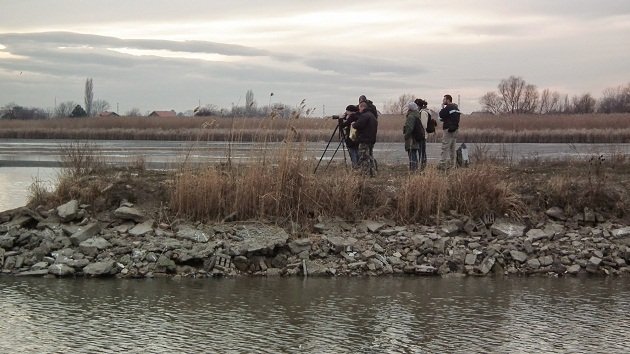
While there are some two dozen birding spots in Belgrade, Serbia, that stand out, in this guideblog I will focus on the river Danube and its floodplain, inside the Important Bird Area “Confluence of the Sava and the Danube Rivers”.
The top-5 places to bird along the Danube, without leaving the city:
THE DORCOL PROMENADE (44°49’50″N, 20°27’16″E)
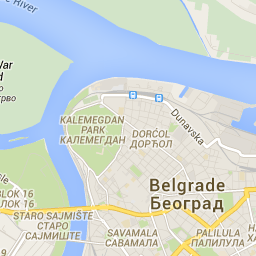 The Dorcol Promenade (officially: The Bank of Major Gavrilovic), is one of the best places to look for birds in Belgrade. Overlooking the confluence of two large rivers, the Sava with 1685 cubic meters of water per second (445 gallons per second) on average with the Danube with 5476 m3/sec (1447 gal/sec), where the currents slow down creating shallows and islands – the conditions that attract waterbirds, especially wintering flocks.
The Dorcol Promenade (officially: The Bank of Major Gavrilovic), is one of the best places to look for birds in Belgrade. Overlooking the confluence of two large rivers, the Sava with 1685 cubic meters of water per second (445 gallons per second) on average with the Danube with 5476 m3/sec (1447 gal/sec), where the currents slow down creating shallows and islands – the conditions that attract waterbirds, especially wintering flocks.
The Veliko Ratno Island birdlist is about 170 species long, of which more than 90 were observed from the Dorcol Promenade. The number of waterbirds around the island during cold spells goes up to 10,000, including some real gems.
When to bird: The best period birdwise is from November to February, because the Danube in Serbia seldom freezes; although it did so recently, in February 2012, when the 1000 m / 3300 ft wide river was frozen solid from bank to bank, causing a large mortality among waterbirds.
Highlight species: Ferruginous Duck, Goosander, Red-breasted Merganser, Red-crested Pochard, Greater Scaup, Velvet Scoter, Black-throated Diver. While regular in winter, Pygmy Cormorants do not breed in the vicinity and are absent in spring and summer. In late February and March, the only duck species that does not overwinter here is heading back – the Garganey. By the end of March, Black Storks are back (they will be noticeable on autumn migration in late September and October, too), as well as Black-crowned Night Herons. There is a breeding pair of White-tailed Eagles at the Veliko Ratno Island and they can be seen year-round, but the best chances are in winter, when they hunt ducks around the island. In March and November, Common Cranes are a possibility. Locally rare, the Little Gull was observed from September to November, while Caspian Tern was observed in September-October.
Tactics: Beside a few small flocks by the bank, most of the birds will be in shallows by the Veliko Ratno Island, some 400 m / 1300 ft away, which calls for a scope.
Bus: 79 & 24.
ADA HUJA PROMENADE (44°49’23″N, 20°30’35″E)
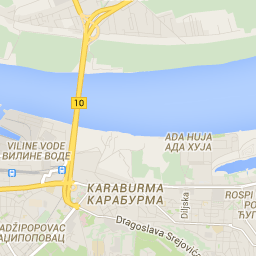 The next winter bird spot lies some 4.5 km / 2 mi downriver – the Ada Huja Promenade. In this section, the Danube is twice as wide and without a scope you would be wasting time here. In comparison to the Dorcol Promenade, number of both species and individuals here is smaller. If that is the case, why come here at all? For the flocks of gulls on the water in the morning and afternoon, as well as in flight, especially in late afternoon, returning from the city rubbish dump to their roosts.
The next winter bird spot lies some 4.5 km / 2 mi downriver – the Ada Huja Promenade. In this section, the Danube is twice as wide and without a scope you would be wasting time here. In comparison to the Dorcol Promenade, number of both species and individuals here is smaller. If that is the case, why come here at all? For the flocks of gulls on the water in the morning and afternoon, as well as in flight, especially in late afternoon, returning from the city rubbish dump to their roosts.
When to bird: The best birding season is from November to February.
Highlight species: Among tens of thousands of Black-headed Gulls and thousands of both Yellow-legged, Caspian and Common Gulls, there usually are a few Lesser Black-backed Gulls (Baltic race Larus fuscus fuscus with jet black mantle). But the real rarities here were the fourth record of Great Black-backed Gull (several observations in winter of 2013-14) and the sixth record of Pallas’s Gull for Serbia (in frozen February 2012). Pygmy Cormorants are regular, occasionally a White-tailed Eagle and during cold spells, Goosanders.
Tactics: For both Dorcol and Ada Huja promenades, do not hurry in the morning because there is often mist hanging above the water. Also, the promenades are dotted with cafes where you can warm up after birding.
Bus: 25P, 32, 32E, 35, 35L, 74 & 202.
More:
10000birds.com/the-fourth-record.htm
10000birds.com/luck-favours-the-stubborn.htm
KOZARA FLOODPLAIN (44°51’15″N, 20°26’E)
With the advance of spring, consider exploring the left (northern) bank of the Danube. One good area is the Kozara floodplain, between the river and the dyke, opposite the Veliko Ratno Island.
When to bird: The best season is April – early May and late August – September.
Habitats: Walking paths mostly follow the edge of alien poplar plantations, but you will find some indigenous oaks and ashes and, the further downriver you go, riverine belts of willows and poplars. The wet meadows are mostly overgrown with the invasive North American desert false indigo or indigo bush (Amorpha fruticosa).
Highlight species: On the Kozara proper, in recent years some 110 bird species were recorded, among them Garganey, Black Stork, Pygmy Cormorant, Squacco and Night Herons, Eurasian Sparrowhawk, Eurasian Hobby, Common Redshank, Green Sandpiper, Grey-headed Woodpecker (November), Lesser Spotted Woodpecker, Common Kingfisher, Eurasian Golden Oriole, Common Raven, Icterine and Wood Warblers, Common Chiffchaff and Long-tailed Tit.
Tactics: Aim for early mornings and from the end of April, carry an insect repellent for mosquitoes. When you enter the Kozara Floodplain, you can explore both left and right hand side, but going left offers a greater choice of habitats and a larger area.
Bus: 104.
More:
10000birds.com/all-my-patches.htm
REVA POND (44°50’51″N, 20°31’59″E)
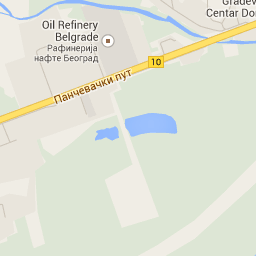 The next spot is the Reva Pond in the suburb of Krnjaca.
The next spot is the Reva Pond in the suburb of Krnjaca.
When to bird: The best period here may be the breeding season (May-June) and the autumn migration in September.
Habitats: open water, lilypads, reedbeds, indigenous willows and poplars at one, and the alien poplar plantation at the other side. A few hundred metres away, you may also climb the dyke and check the Danube backwaters, even walk along the dyke for several kilometres.
Highlight species (pond only): Garganey, Ferruginous Duck, Little Grebe, Little Bittern, Squacco and Night Herons, White-tailed Eagle, Little Ringed Plover, Wood and Green Sandpipers, Whiskered Tern, Common Cuckoo, Eurasian Hobby, Red-backed and Lesser Grey Shrikes, Eurasian Penduline Tit.
Tactics: On sunny days try not to come here too early, because most of the pond stretches towards the east and the sun glare on the water surface will effectively blind you.
Extras: Beside birds, Reva is an important habitat for dragonflies and damselflies (Odonata). In northern plains of Serbia some 37 species of Odonata were recorded – 30 of them on and around this pond alone. The only mammal species I have observed here were the Brown Hare and Least Weasel, but Golden Jackals and even Wild Boars are present, too.
Bus: Leave the bus 108 at the stop called the Oil Refinery Belgrade and follow the dirt road left of the blue Jeep Commerce building until you reach the bridge over the Reva pond.
More:
10000birds.com/all-my-patches.htm
10000birds.com/those-sea-serpents.htm
VELIKO BLATO LAKE (44°52’11″N, 20°29’27″E)
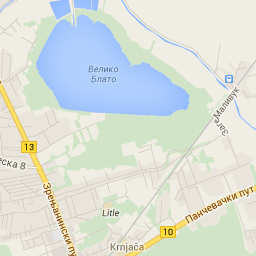 Veliko Blato (cover photo: January sunset, 2014) is one of the last remaining ponds of once huge wetland area of Pancevacki Rit, across the Danube from Belgrade.
Veliko Blato (cover photo: January sunset, 2014) is one of the last remaining ponds of once huge wetland area of Pancevacki Rit, across the Danube from Belgrade.
When to bird: Veliko Blato is a good spot year round, so instead of saying what the best season is, I’ll warn you of the low season: late July – early August and October when songbirds are already gone and waterbirds haven’t arrived yet! In winter, numerous gulls, herons and ducks congregate here, including the Common Shelduck (which is rarely seen from the Dorcol Promenade). February is the beginning of the waterbirds migration which will reach its peak in March. April is the height of the songbird migration and also the time when Great Crested Grebes perform their elaborate mating displays. In May and June, Black-crowned Night, Purple and Squacco Herons breed in the reeds of the Veliko Blato Lake. Depending on the water level, in late August waders start to arrive. Ducks mostly migrate in November, reaching their peak by mid-December.
Habitats: open water, mudbars, and reedbeds.
Highlight species: Greylag Goose, Common Shelduck, Northern Shoveller, Garganey, Ferruginous Duck, Little Bittern, Black-crowned Night, Purple and Squacco Herons, White and Black Storks, Eurasian Marsh Harrier (in winter Hen Harrier, too), White-tailed Eagle (easy, especially in spring), Northern Lapwing, Black Tern (migrating), Whiskered Tern, Eurasian Penduline Tit, Bearded Reedling, Common Grasshopper and Savi’s Warblers, Meadow Pipit and Common Reed Bunting.
Tactics: It is possible to walk around the main lake (about 6 km / 3 mi), but if your time is limited, you can go a quarter of that and then turn back (in that case, go west because the reeds aren’t so dense and there will be more openings). From late April, carry an insect repellent with you.
Bus: 95, 96 & 104.
Access: The Veliko Blato lake is being run by the Mika Alas fish farm company, so one needs to ask for a permit in advance (management contact), but I have not heard of any birder ever being rejected.
More:
10000birds.com/heavy-weight-aerial-combat.htm
Useful links:
The Bird Specialties of Belgrade
This guideblog was produced within the “Birdwatching Belgrade and the Djerdap NP” project run by the Supernatural NGO and financed by the Danube Competence Center. The aim of the project was to evaluate the ecotourism potential of the Serbian Danube and to offer birding as the new tourism product of the area.
In the previous guideblog: Where to watch birds in the Iron Gates.


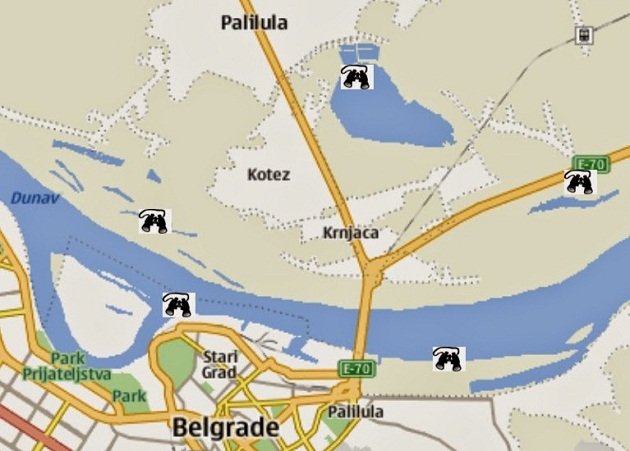
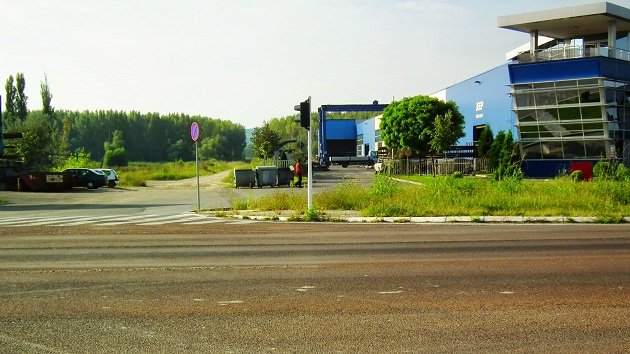











Well done! Thanks for this.
I spent an enjoyable day of birding with Dragan in September, visiting several interesting spots north of Belgrade and finishing up at Reva Wetlands. At Reva our sightings included squacco heron, little grebe, spotted flycatcher, eurasian nuthatch, lesser spotted woodpecker and buzzard…. it was nice to be in such a setting which is so reachable from the city.